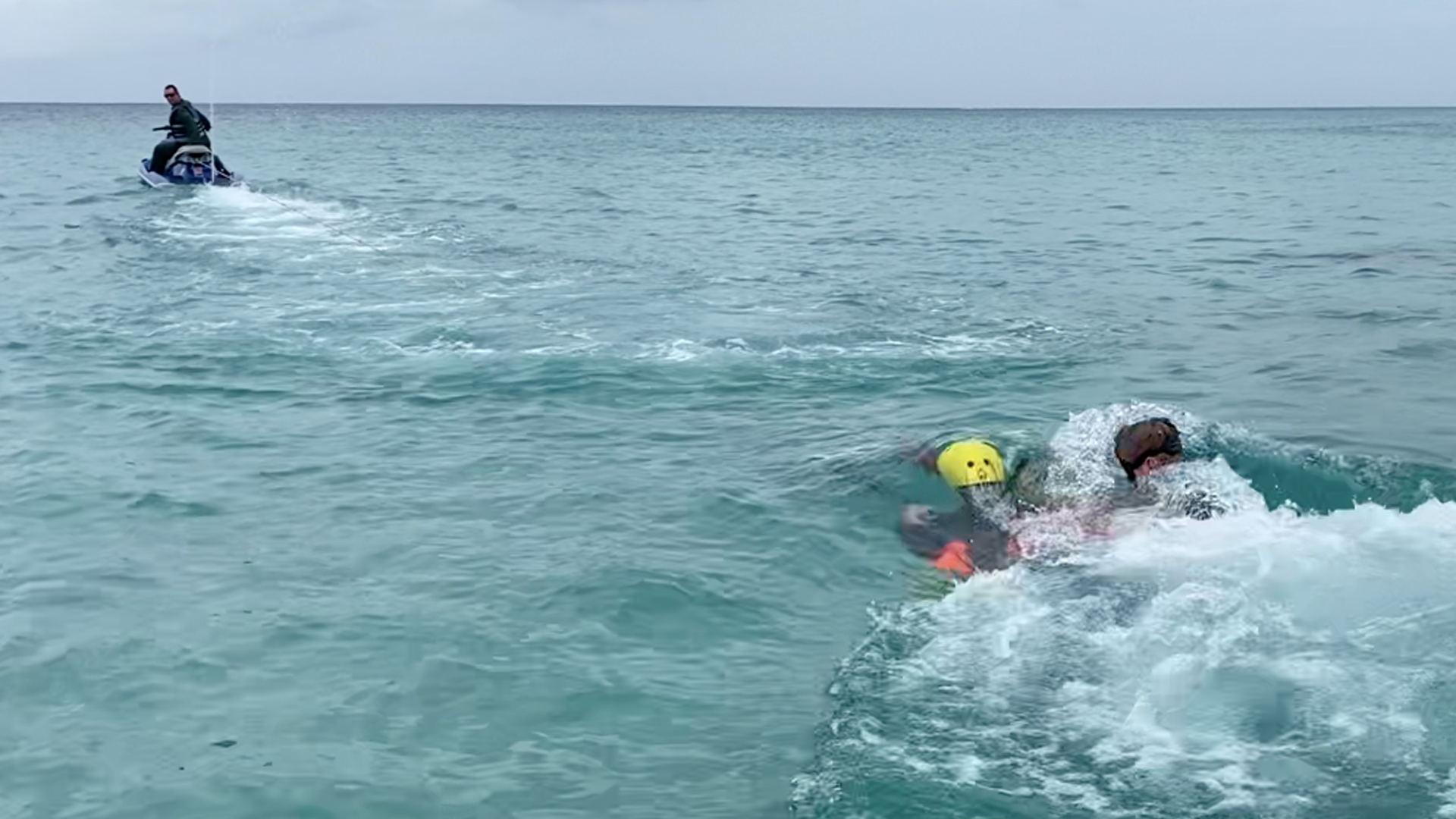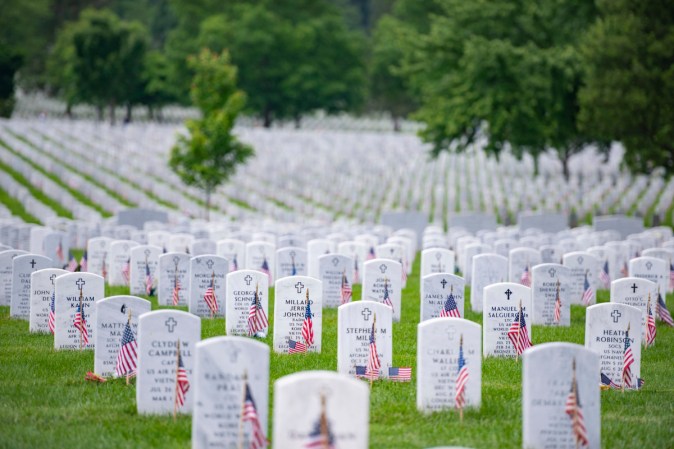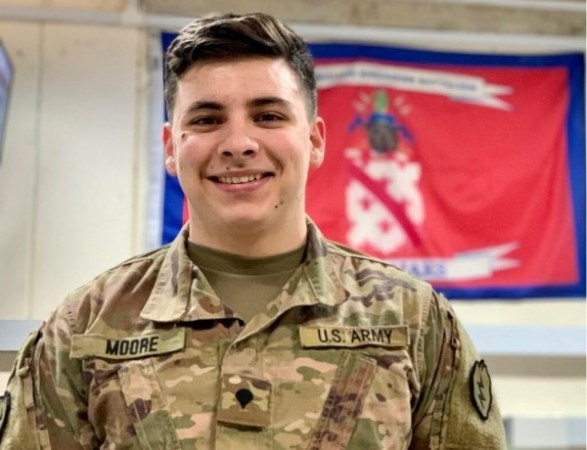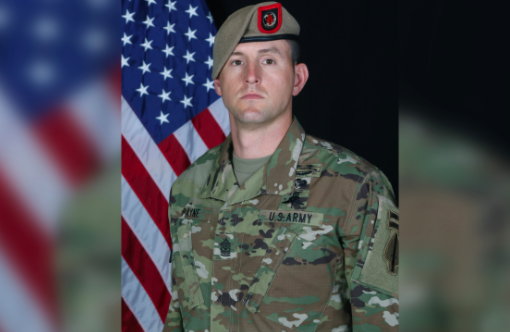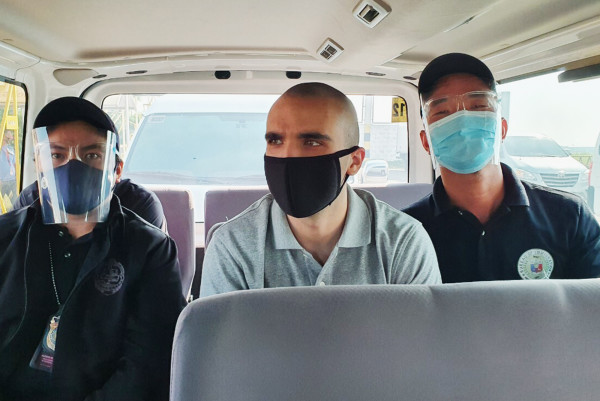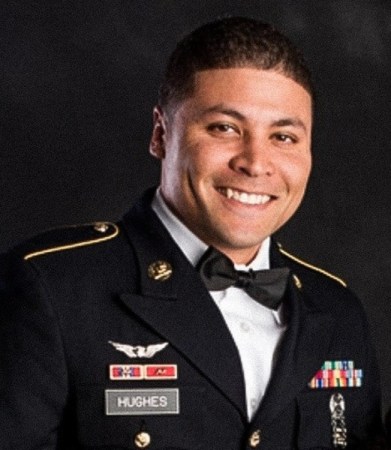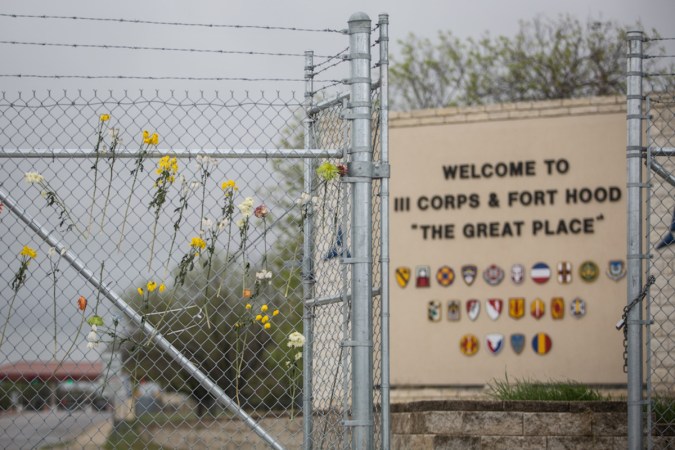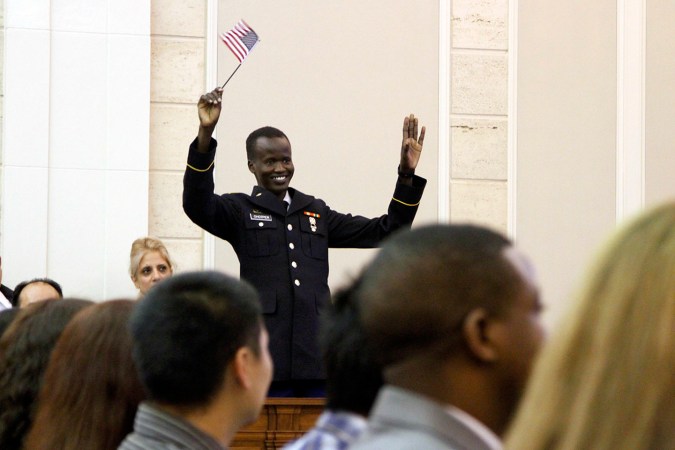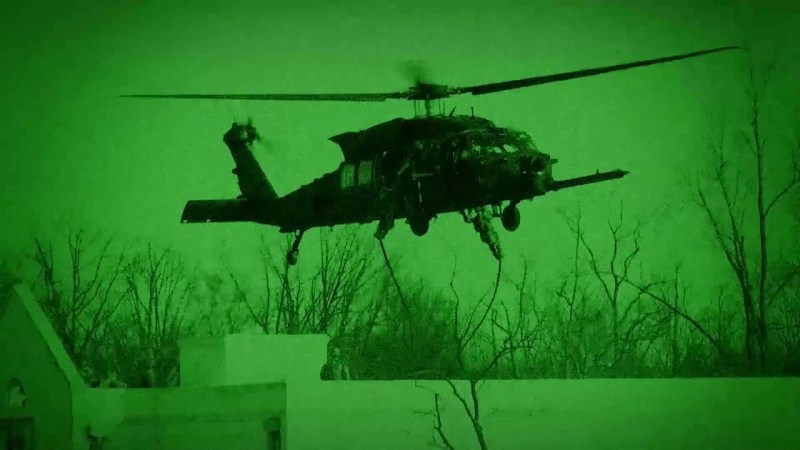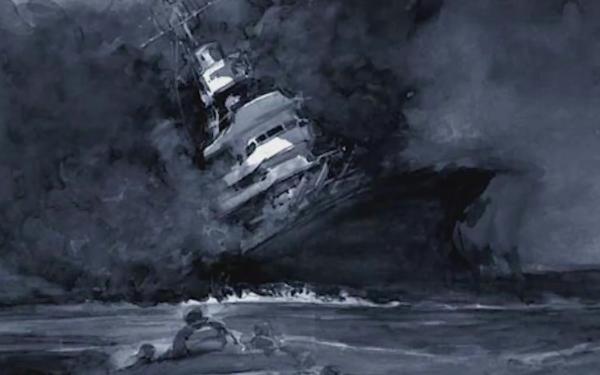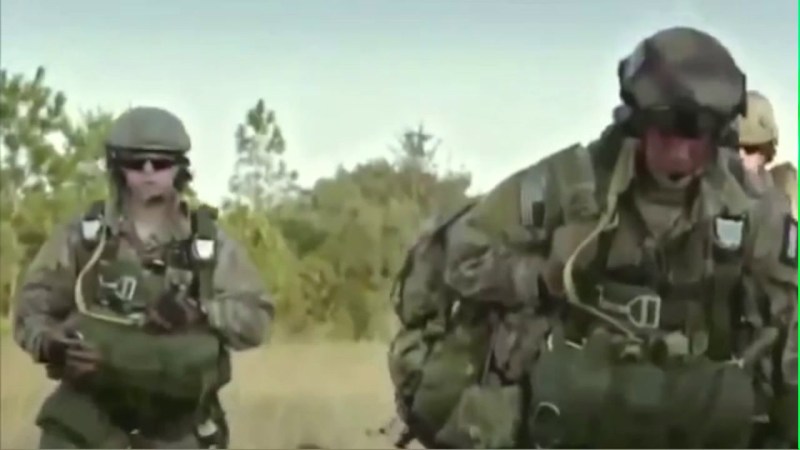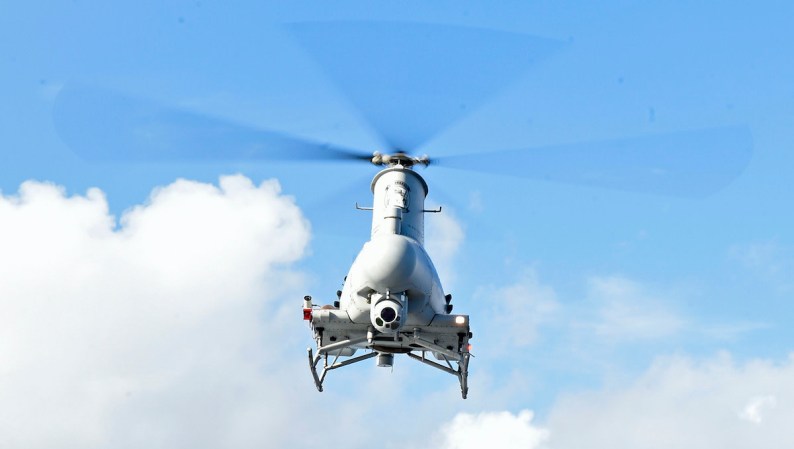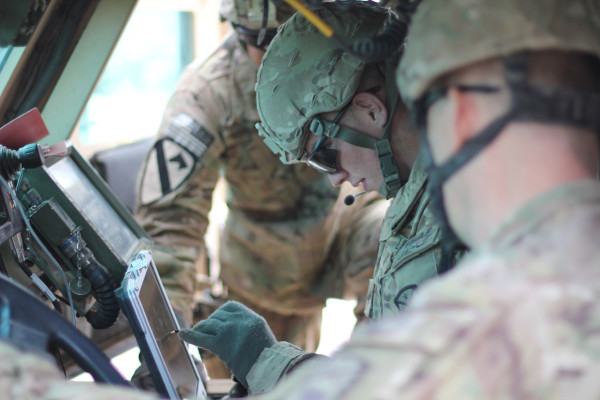Air Force pilot recruiting brochures probably don’t mention the possibility of having to bail out of an aircraft, but it is one of many outcomes that aircrew members train for. That was why airmen with the 53rd Weather Reconnaissance Squadron were dragged through the ocean by a jet ski on the beach of the Caribbean island of St. Croix earlier this month. While not the most glamorous experience, it is part of how airmen prepare for one of the scariest moments in their lives: jumping out of an aircraft over the open ocean.
“This is all training for the worst possible sequence of events on a mission,” said Lt. Col. Mark Withee, a navigator with the 53rd Weather Reconnaissance Squadron, also known as the Hurricane Hunters.
“If that happens, we want to give people the best chance to survive as intact as possible,” he said.
Pilots, navigators and enlisted aircrew with the 53rd traveled from their home at Keesler Air Force Base, Mississippi to St. Croix to take part in water survival training. All Air Force aircrews must undergo water survival training every three years, but it’s especially relevant for the Hurricane Hunters, who spend much of their time flying over open ocean collecting data on storms. Water survival training classes are often held in lakes or swimming pools, but the 53rd wanted something a bit more realistic to prepare their crews. Plus, the Hurricane Hunters roll out their equipment to St. Croix every May as part of its wind-up for the summer hurricane season, so why not have survival training there?
“Being able to conduct this training in the ocean at St. Croix was extremely beneficial,” said Staff Sgt. Ethan Perry in a press release about the training. As a Survival, Evasion, Resistance and Escape Specialist, it was Perry’s job to teach survival skills to the members of the 53rd.
“It’s a realistic environment, and we were able to go over what to expect if aircrew had to bail out of the aircraft over the ocean or if the aircraft is downed in the ocean,” he said.
The 53rd is the only unit in the military that hunts hurricanes, providing data on humidity, wind speed, wind direction, temperature, air pressure, dewpoint and other elements that satellites can’t pick up as closely or at all. That data helps scientists at the National Hurricane Center figure out where the storm is heading and when it will get there, which helps officials prepare for storms and limit the damage they cause.
Withee said people often ask him what would happen if one of their modified C-130 transport planes were to go down in the middle of one of those storms. While the crew does bring parachutes aboard the plane, the chances of surviving a bail-out in the eyewall of a hurricane are negligible, he said. However, there are plenty of other scenarios that could play out where the crew might have to bail out over the ocean.
“Things happen,” Withee said. “We get hit by lightning, there’s bad hail that cracks the window … and when that happens, we want to be trained to survive.”
Subscribe to Task & Purpose Today. Get the latest in military news, entertainment, and gear in your inbox daily.
Bailing out of an airplane is not a decision crews make lightly. Aircrews across the service train to troubleshoot and overcome a huge range of problems that can come up during a flight, to the point where pilots routinely make headlines for landing without a canopy or with much of a tail shot off. During every pre-flight brief, the Hurricane Hunters discuss what the weakest part of the storm is and where the closest airfields are that they can divert to if something goes wrong. They also train to identify the worst parts of a storm and avoid flying through it. Jumping out of an airplane, even a half-broken one, is very much a last resort.
“We’re always going to fight to bring the aircraft back,” Withee said. “But we bring parachutes for a reason.”

It is rare, but accidents in storms have happened. On Oct. 12, 1974, a crew with the Air Force’s 54th Weather Reconnaissance squadron was lost when they flew out of Clark Air Force Base in the Philippines and into Typhoon Bess for a reconnaissance mission. No emergency communications were received, and while search crews picked up debris from the missing plane four days later, no survivors were found. That was the last U.S. weather reconnaissance flight to be lost in a tropical cyclone, according to the National Oceanic and Atmospheric Administration, and hopefully it will stay that way.
But as the saying goes: ‘hope for the best, prepare for the worst,’ and the training in St. Croix checked that box. The saying might also be one of the guiding lights for the SERE specialists who run the training, the maintainers who keep the aircraft ready to fly, and the Aircrew Flight Equipment airmen who manage the gear that aircrew need to survive hairy situations.
“The 53rd gets attention but we can’t do it without the maintainers who work around the clock through storm season to keep the planes going reliably as we fly, the life support people who keep the life rafts, parachutes and other emergency equipment inspected, and our SERE guys who set up all the training like this,” Withee said.

With all the gear taken care of, it’s up to the aviators to keep themselves alive if the worst case scenario comes knocking. There is a checklist of tasks that aircrew prepare for in the unlucky event that they find themselves drifting towards the ocean by a parachute.
“As you parachute, you check your canopy, flip your visor up, get rid of your oxygen mask, release your seat kit so it dangles beneath you and inflate your life preserver so you float when you hit the water,” Withee explained.
Hitting the ocean water in a parachute has its own set of complications. The wind may catch the parachute, drag you along the surface, and tangle you in the lines, which in rough waters while wearing a flight suit and boots on can be inescapable. The wind is no joke: Withee recalled watching it drag a 350-pound crate of oceanic data buoys along the surface of a relatively-calm sea last December. The parachute was similar to the ones the crew had on their WC-130J modified cargo plane.
“It’s heavier than most people in the military and in a big bulky box and that sucker is dragging across the water, and that’s not even a storm periphery environment,” he said.
Getting dragged through the water is a disorienting experience, which is why airmen with the 53rd spent some time being dragged by a jet ski in St. Croix. It’s not glamorous, but it’s necessary.
“Your body is in an awkward position, and in all likelihood your head is still in the water,” Withee explained. “So you’ve got to be trained to take a position to stabilize yourself and go for your canopy releases. You revert to that training and release” the parachute.
Once the parachute is gone, the downed aviators are trained to inflate their personal life rafts. Each emergency seat kit comes with a one-man life raft inflated by a small CO2 canister. The aircrew member gets in the raft, which, like everything else, could be more challenging than it sounds after bailing out of an airplane.
“There are a couple techniques we train on to get into those: like if you have bailed out of a plane you may be injured, and if you have a broken arm how do you get into that life raft with one arm?” Withee said. “We practice these things so that we can be prepared to deal with it.”
Once the aviator is in the life raft, “you look at improving your situation … hopefully you’re in contact with other people that bailed out of the aircraft,” the navigator said.
There are many stories from World War II of aviators who bailed out over the ocean and had to drift for weeks waiting for someone to find them. In the 21st century, Hurricane Hunters hopefully will not have to wait that long.
“Fortunately for us, everybody can see where we are at all times,” due to satellite communication and navigation technology, Withee said. “Nowadays there are thousands of people who watch our missions, so they have a good idea of where the aircraft is. Hopefully, we would be rescued in fairly short order.”

But even getting rescued is a skill in itself. A Coast Guard MH-60 helicopter took part in the training by flying over the swimming aviators, lowering a basket and pulling them up. The MH-60 is a big helicopter that creates its own tiny storm on the water.
“It’s one thing to swim in the ocean with fins and a swimsuit, but if you’re swimming in a flight suit, boots and life preservers and through intense rotor wash and spray then it’s challenging,” Withee said.
The basket itself has its own dangers. The navigator explained that the helicopter builds up a static charge that gets transmitted through the cable or rope and into the basket. Even damp ropes can transmit the charge, so the rescued swimmers might get a painful shock if they grab hold of the basket before it settles down on the water.
“If you grab it before it settles you get a pretty solid shock, it’s quite unpleasant,” he said. “You may be very eager to get pulled out but let that thing ground out.”
Once that’s done, riding up in the basket is pretty fun, Withee said, especially if you keep your hands in the right position so that they don’t get crushed by the basket upon entering the helicopter. Despite all the hazards of surviving in the water, getting out of a stricken airplane is the hardest part, the navigator said.
“If you find yourself in the water it’s been a really bad day, but you’ve already survived the worst of it,” he said.
That’s why the crews of the 53rd took part in the water survival training: to make sure a bad day does not get any worse.
“These are all unlikely scenarios, but at the same time, every year military aircraft go down for various reasons,” Withee said. “You never know when those skills may be helpful, when all those holes in the Swiss cheese line up.”
The latest on Task & Purpose
- Russian troops are proving that cell phones in war zones are a very bad idea
- Air Force disciplines C-130 crew for ‘unplanned’ landing to pick up motorcycle in Martha’s Vineyard
- Commandant walks back possibility of Marines skipping boot camp
- Air Force pilots explain why the F-22 Raptor is a ‘beast’ in aerial combat
- Sailors from my old ship are dying by suicide. I may know why
Want to write for Task & Purpose? Click here. Or check out the latest stories on our homepage.

